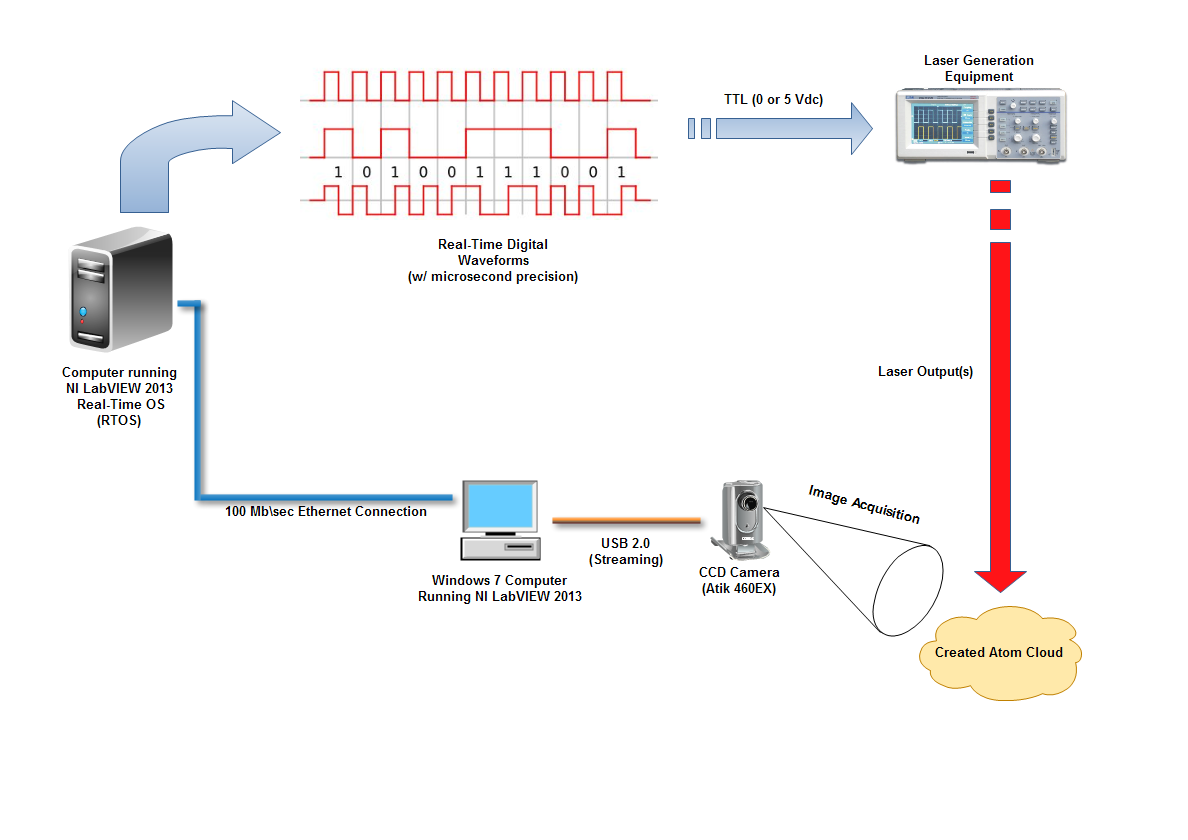Instrumentation Laboratory Project Page
Project: CCD Cold Atom Imaging
Department: Physics
Primary Investigator: Dr. Samir Bali
Purpose: In our lab we study the dynamics of
atoms that have been cooled using laser beams to microKelvin
temperatures, and arranged into a regular periodic array known as an
optical lattice.The most direct method for imaging cold atom dynamics
is imaging via a fast (short exposure time) sensitive CCD camera. The
camera is used to either track changes in either the center of mass of
the cold atom cloud or in the width, as a time sequence of millisecond
exposures is recorded.
IL helped us build a cold atom imaging system with low dark current
levels for imaging few million atoms. Importantly, IL created a LabVIEW
interface that enables the sequence of precise timing events necessary
for measuring cold atom dynamics. The imaging system they built for us
offers significant improvements over previously reported systems in
terms of timing jitter, pixel density, and resolution while offering
comparable well-depth, quantum efficiency, read noise, and dark
current. Our system cost is less than $5k, much less than the $45-50k
price tag on comparable commercial systems. For all these reasons, our
fast imaging system is of significant interest to the cold atom
community.
IL Comment: Researcher required a system that
would allow for the creation of custom digital waveforms (on the
microsecond level) for triggering various experimental apparatus
(accepting TTL level signals) in their lab. Another function of the
system is to interface with a CCD camera to capture images of the cold
atom “clouds” as they are being formed\destroyed.
Given the precise timing requirements, we decided to a use a
master\slave setup in LabVIEW through the use of a Windows system and
Real-Time Operating System (RTOS). The RTOS is required to send out the
digital TTL signals with microsecond precision. However, that is only
one half of the system. For the exposures the researcher required from
their camera, they selected a camera that is primarily used for
astronomy applications, which have long exposure times. Since there
were no pre-existing LabVIEW drivers available for this camera, the I\L
had to create these from scratch in order to get camera exposures in
the millisecond range. In the end, this system performs as requested
for the researcher and has many of the features that commercialized
systems provide while being at least 1/10 of the cost.
Cost to researcher: $716.32


